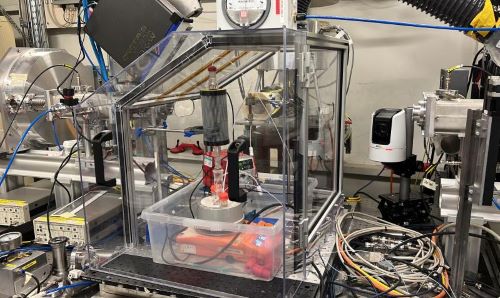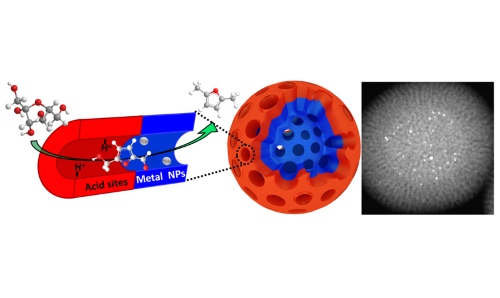
Catalysis
Design and production of advanced novel catalytic materials.
Renewable, sustainable biomass is widely accepted as a key chemical feedstock for the future, with its utilisation key to achieving net-zero emissions and the transition of the sector to a circular economy. Multi-step reactions represent a key step towards the utilisation of non-edible lignocellulosic biomass and its derivatisation into sustainable chemicals and fuels.
While convention has typically dictated an approach of focusing on each single step discreetly, catalytic cascades, in which multiple steps are conducted at once, offer significant economic and environmental advantages. However, the development of multifunctional materials possessing two or more different active sites is critical to the exploitation of such processes. Sustainability is not only limited to the process; consideration of the catalyst is also critical.
Single-atom catalytic sites represent the ultimate in heterogeneous catalysis active site miniaturisation and, thus, efficient use of often scarce resources such as platinum group metals. Developing such systems for selective transformation of biomass and derivates from biomass links into the concept of cascade processes and are developed hand-in-hand.
However, shrinking the active site to an isolated atom may not result in optimal performance, with the size gap between single sites and conventional nanoparticle systems representing a materials challenge. Releasing optimal catalyst configuration requires materials to span systems comprising two-atom species up to clusters of tens of atoms. This size domain may well prove to be superior, especially in bimolecular reactions or where bimetallic species have displayed interesting synergies.

Waste represents a complementary potential chemical feedstock, which, in the case of plastics, can be considered akin to biomass streams, with both requiring the breaking down of a polymeric structure. Moreover, plastic recycling is critical to realising a circular economy within the sector, which will aid in addressing this problematic waste by realising its inherent value.
These independent but interwoven themes are underpinned through absorption and emission x-ray spectroscopy, including the development of novel reaction environments to enable operando investigations to elucidate the nature of active catalytic species and pathways to their deactivation (figure 1).
Projects
Unlocking multi-step catalytic cascade reactions necessitates catalytic systems that can predictably drive a cascade so that each individual catalytic transformation occurs solely over the desired site. The spatial compartmentalisation of two different sites within a single porous structure (figure 2) represents one strategy, with the power of such advanced materials demonstrated for oxidations and biofuel production.

Sub-nanometre active species represent the efficient utilisation of global resources. While reactions on single-atom systems have shown promise, e.g. methane activation, further synthesis developments and on-stream stability assessments are paramount if these are to find industrial applications. Additionally, the potential advantage of diatomic and smaller cluster active species is still to be explored.
Plastic depolymerising to monomers provides a pathway to waste valorisation. Polyethylene terephthalate (PET) conversion to dimethyl terephthalate represents a chemical route for recycling plastic bottles (and clothing). Returning PET to its monomers allows the production of recycled polymers identical to their virgin equivalents; however, efficient catalytic processes, ideally under mild conditions, require advanced catalysts.
